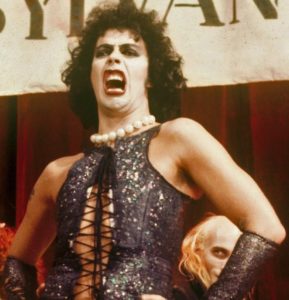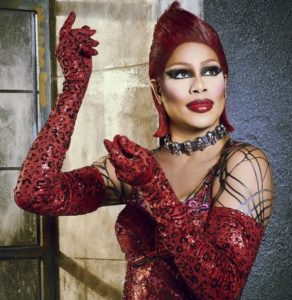The mass media, both news and entertainment, are frequently accused of trying to put forward an extremist agenda of violence, permissiveness, homosexuality, drug use, edgy fashion, and non-mainstream values.
People in the media business, be they entertainers or journalists, respond with the argument that they are just “keeping it real,” portraying the world as it is by showing aspects of society that some people want to pretend don’t exist. They have no agenda, the argument goes; they just want to portray reality.
Now it is true that much of what the media portray that upsets people is real. On the other hand, it is a bit disingenuous to argue that movie directors and musicians are not trying for shock value when they use offensive language or portray stylized violence combined with graphic sexuality. Think back to any of a number of recent horror movies. We all know that teenagers routinely get slashed to ribbons by a psycho killer just after having sex, right? Clearly, movie producers are trying to attract an audience by providing content that is outside of the mainstream.
The problem with the argument between “keeping it real” and “extremist agenda” is that it misses what is actually happening. There can be no question that audiences go after media content that is outside of the mainstream. By the same token, the more non-mainstream content is presented, the more ordinary it seems to become. This is what is meant by Secret 3—one of the mass media’s biggest effects on everyday life is to take culture from the margins of society and make it into part of the mainstream, or center. This process can move people, ideas, and even individual words from small communities into mass society.
We can see this happening in several ways. Take the 1975 cult movie The Rocky Horror Picture Show that tells the story of a gay male transvestite (Dr. Frank-N-Furter) who is building a muscle-bound boyfriend (Rocky) for himself when a newly engaged straight couple show up at his castle’s doorstep seeking shelter from a storm. While the movie found success as a midnight movie in the counterculture community, it took years to move from being considered a flop to being a cult classic.
But in recent years Rocky Horror has moved from being a midnight movie to being a core element of popular culture.
The Fox Broadcasting show Glee did a Halloween episode in 2010 where the kids in the show’s glee club produced The Rocky Horror Picture Show as a high school musical. But the Glee version had actress Amber Riley playing the part of Dr. Frank-N-Furter, while the part of Rocky was still played by a male actor, Chord Overstreet. Thus, the central plotline went from gay to straight. The Glee version also had Frank-N-Furter singing about being from “Sensational, Transylvania” instead of “Transsexual, Transylvania.” With these changes, The Rocky Horror Glee Show became a perfect example of Secret 3.
Rocky Horror started out as a camp musical in the 1970s that found enormous success in the counterculture community. But Glee sanitized it from a celebration of cross-dressing gay culture into a mass-market story of straight people playing with gay themes. In 2016, Fox Broadcasting showed a full remake of Rocky Horror that aired in October featuring trans actress Laverne Cox (of Orange Is the New Black fame) as Dr. Frank-N-Furter. Hollywood Reporter reviewer Daniel Finberg noted in 2016 that the show is no longer shocking in that “one of the most unorthodox characters in the history of musicals has become oddly conventional.”
An alternative approach is to look at how the media accelerate the adoption of activist language into the mainstream. Take the medical term intact dilation and extraction, which describes a controversial type of late-term abortion. A search of the LexisNexis news database shows that newspapers used the medical term only five times over a six-month period. On the other hand, partial-birth abortion, the term for the procedure used by abortion opponents, was used in more than 125 stories during the same time period. Opponents even got the term used in the title of a bill passed by Congress that outlawed the procedure, thus moving the phrase into the mainstream through repeated publication of the bill’s name.
This process is not a product of a liberal or conservative bias by the news media. It’s simply a consequence of the repeated use of the term in the press.
See all of the Seven Secrets About the Media “They” Don’t Want You to Know 2.0


